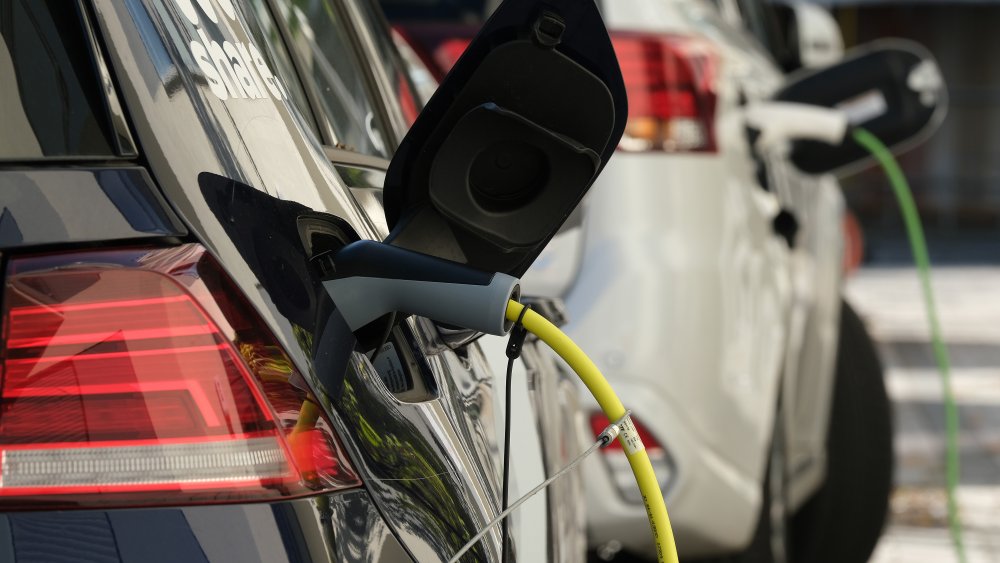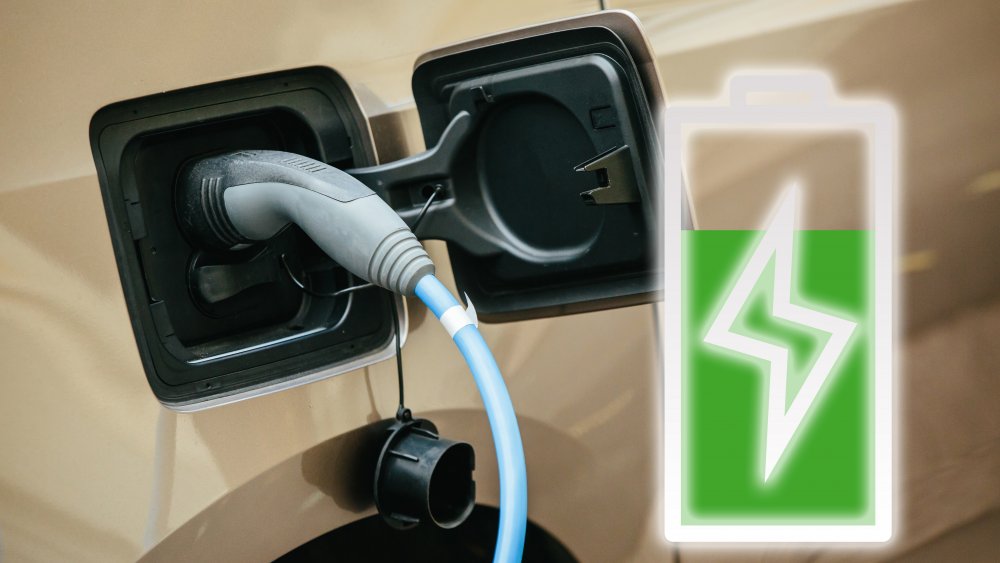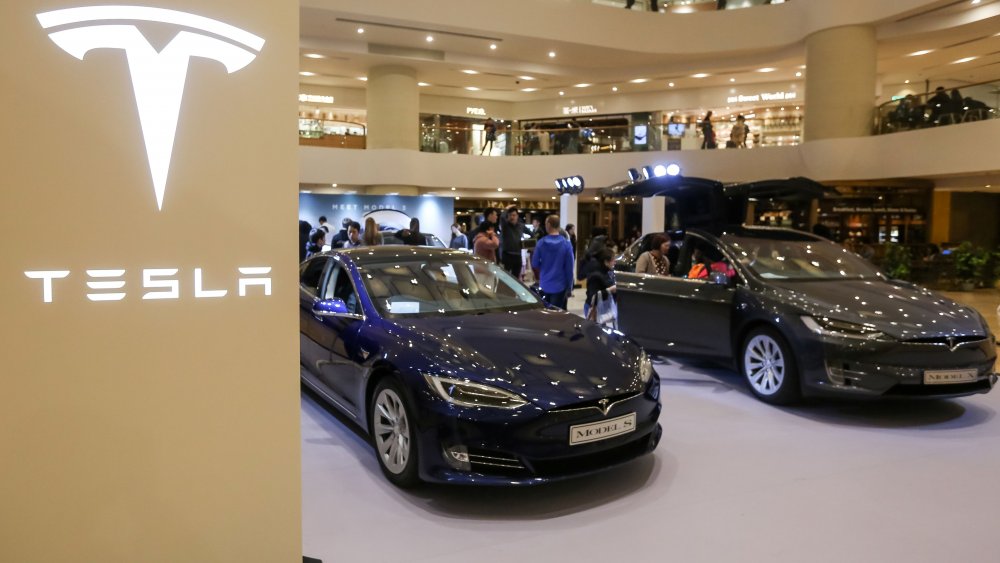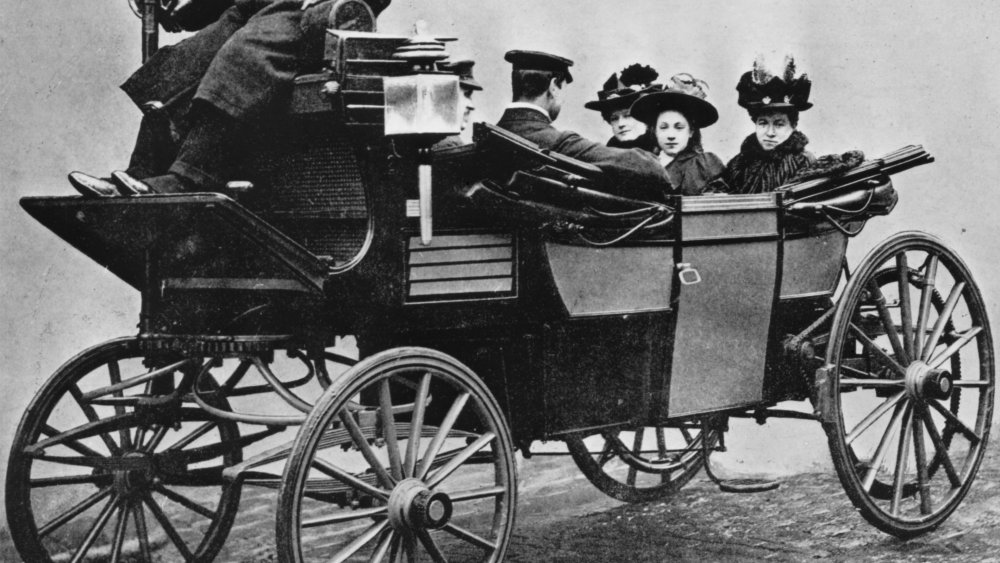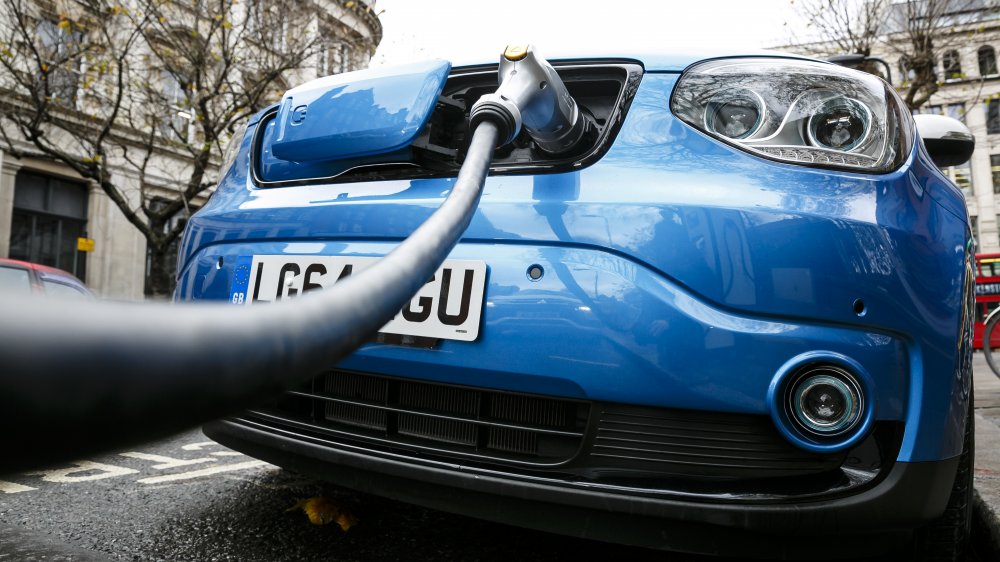Why Are Electric Cars So Expensive?
The future, it seems, is all about disappointment. As children, we were told that the future would have rocket boots. As teenagers, we had to settle for flying cars. By the time we were young adults, the goalpost had moved dramatically to cars that run on giant AA batteries instead of dead dinosaurs. Fine. Doable.
Except now, as full-grown folk, we're finding out that none of us can afford them. What happened? Why is everything the worst? And why does it cost so much to buy what's basically a to-scale Power Wheels? Is it because the windows are so great? It's probably not because the windows are so great.
Daylight robbery, or at least battery
Every state-of-the-art product tends to have at least one hyper-expensive component that keeps it out of the price range of your average Joe. With jet suits, it's the jet suit insurance. With Furbies, it was the astonishingly high cost of imprisoning a lost child's soul in a lumpy bird doll. In the case of electric cars, the offending party is the battery.
Lithium-ion batteries, the magic lightning cubes that power electric vehicles, are two things: everywhere, and expensive. They're in your phone, your laptop, your electric toothbrush, and your 2008 iPod Shuffle. We've been meaning to say something, by the way. You need to get rid of your 2008 iPod Shuffle. It's embarrassing.
The big price point attached to the creation of an Li-ion battery is the cobalt, which mostly gets pulled out of mines in Congo. It's costly and, not to hamstring your hopes of making a better world by driving a Prius, pretty shady.
Just charge it
According to Investopedia, the cost to manufacture a standard-issue Tesla Model S battery is around $30,000. That's nearly half the wear-it-out-of-the-store price already accounted for before the company has even paid to put in cup holders.
Like any technology that finds a foothold in the mainstream, electric vehicle batteries have become less expensive over time. In 2010, the estimated price of a lithium-ion battery was around $1200 per kilowatt hour. By 2018, that figure had dropped to $176 per kilowatt hour. An improvement? Totally. But it still means that a 100 kWh Tesla Model S battery, sold at cost, would run about as much as a full-time federal minimum wage employee makes in a year.
High initial costs have been one of the multitude of thorns in the electric car's side since before you were born. Electric vehicles, as we know them today, are still a relatively fresh idea. but the idea of an electric transport system goes back a ways, with rail-driven electric trolleys getting their start in the 1830s.
Smiling, zappy people
In the 1880s, Gustave Trouve introduced the world to the first rechargeable, battery-operated vehicle, a magnificent tricycle that looked like something out of a Jules Verne fan-fiction, and electric bikes go back even further than that. In fact, by the early 20th century, electric vehicles outnumbered the internal combustion variety 3 to 2, according to Britannica. Both were outnumbered by steam-powered automobiles, which are unlikely to experience the same resurgence in popularity as their brethren due to their being sort of ridiculous.
There were plenty of problems. The cars had a short operating range, a long recharge period, and a top speed that you could outrun if you were feeling particularly limber. As Clean Technica tells it, there was also a stigma attached to their ease of operation: electric cars were for girls.
Nickel-cadmium batteries solved some of the electric car's problems, offering better range and higher speeds, but it wasn't until the introduction of rechargeable lithium-ion batteries in the 1980s that a vehicle powered by the hand of Zeus became a viable means of conveyance. They didn't go into commercial production until 1991, according to Battery University, meaning that there are Offspring albums that are older than this technology. Comparing price points, a gallon of gasoline at around the same point in the fuel source's development cost, adjusted for inflation, around the same amount that it costs today, according to the United States Office of Energy Efficiency and Renewable Energy. Essentially, you can kind of see why one keeps outselling the other.
Positives and negatives
Lithium-ion offers plenty of advantages over its predecessors: lithium is the lightest metal on the periodic table, making it a more weight-efficient battery component than its competing elements. Lithium-ion batteries are relatively low maintenance, and do less damage to the environment when disposed of. But they're also complicated to produce and costly to replace, which, if you want to be safe, you'll be doing every eight years or so if you own an electric car.
In the end, perhaps the only truly cost-efficient and environmentally friendly option is to work from home until we figure out how to make a Mr. Fusion that can propel a DeLorean instead of just powering the flux capacitor.
